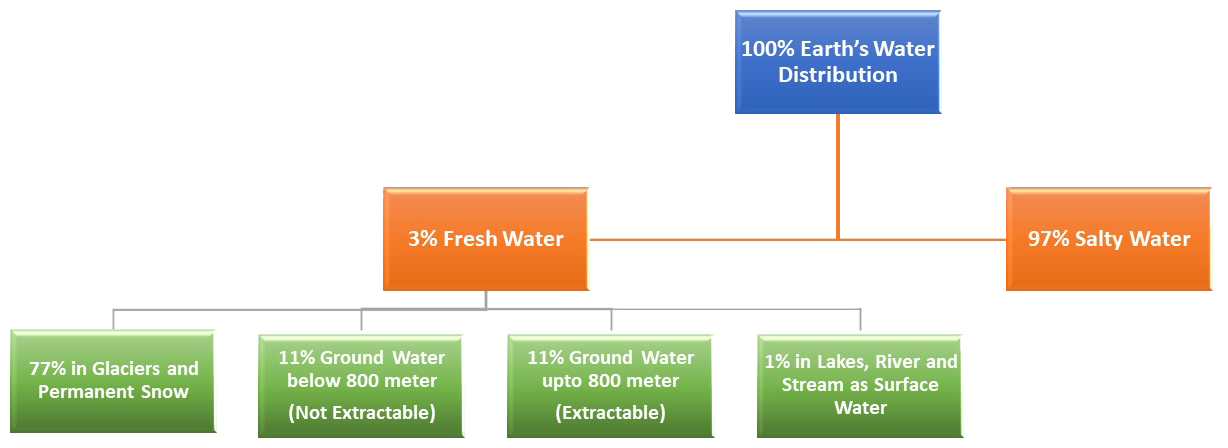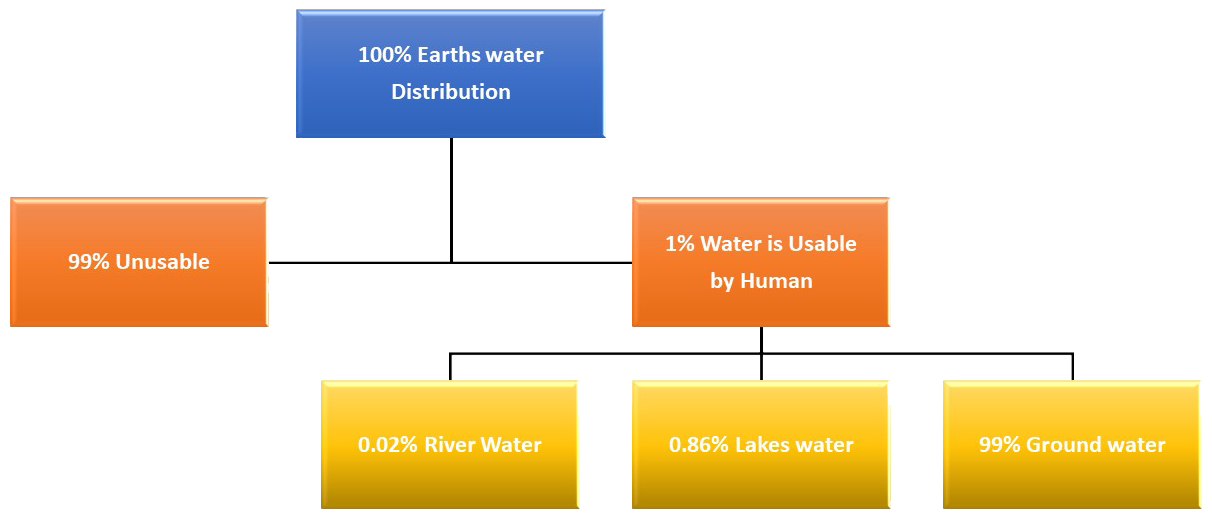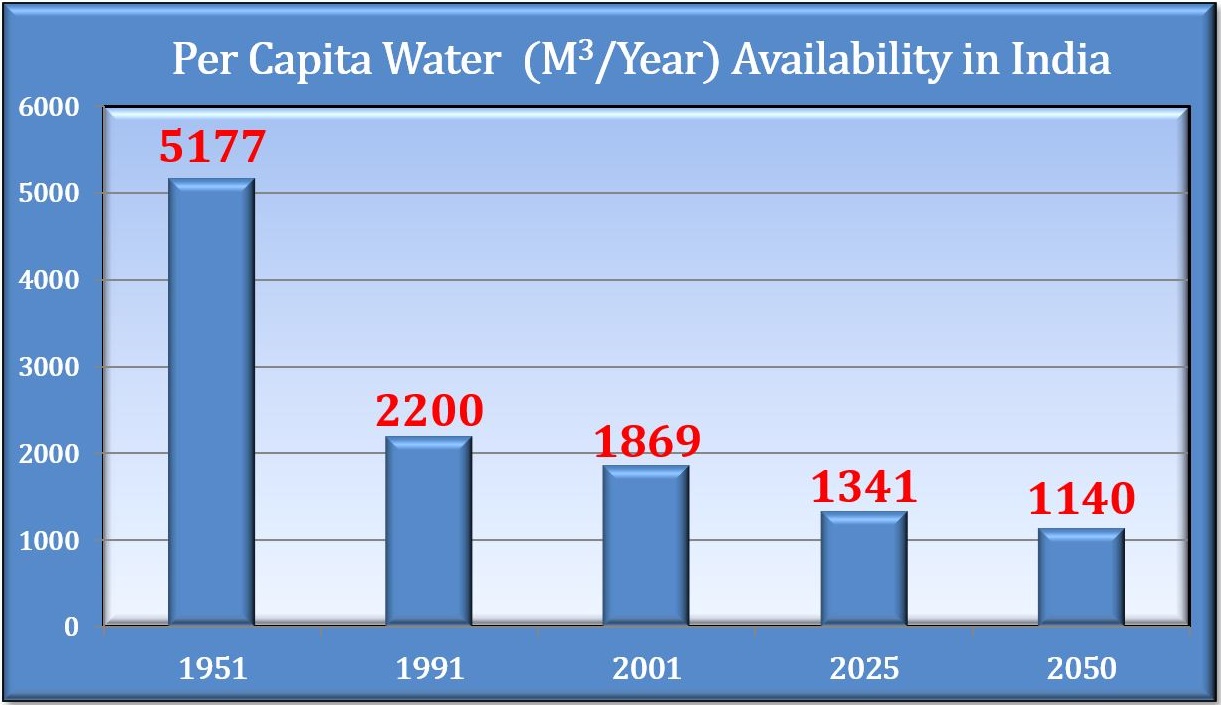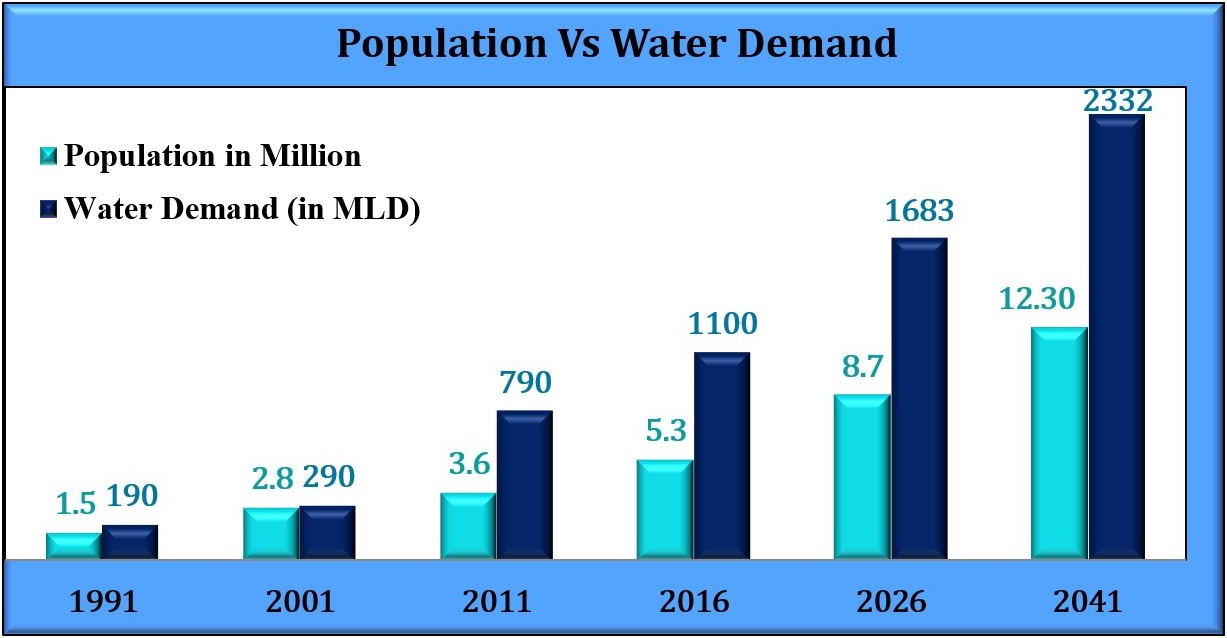Facts about Water in India and Surat
Global and Indian Water Scenario
Water is one of the basic necessities of every living being for their survival. Many of us have an image of the world as a blue planet as 70 percent of the earth’s surface is covered with water. The reality, however, is that 97 % of the total water on earth is saline and only 3 % is available as fresh water. About 77 % of this fresh water is locked up in glaciers and permanent snow and 11 % is considered to occur at depths exceeding 800 meter below the ground, which cannot be extracted economically with the technology available today. About 11 % of the resources are available as extractable ground water within 800 meter depth and about 1 % is available as surface water in lakes and rivers.
Where is Earth's water located and in what forms does it exist?

How much of Earth's water is available for our uses and in what forms does it exist?

General Information about water in India:
India gets 4000 billion cubic meters of water through annual precipitation and only 750 billion cubic meters is used. There is no water scarcity taking the average at nation level. We have 1896 cubic meter per-capita per year, but regional imbalance exists. One of the easiest ways to retain water is in Ground, but current groundwater scenario in India is also not in good shape; water table depleting drastically, as 60% of India’s districts are facing over-exploitation of ground water and also facing serious water quality issues. Based on a report submitted by the Committee on Restructuring the Central Water Commission (CWC) and the Central Ground Water Board (CGWB) in 2016, it is stated that while groundwater provides 80% of the country’s drinking water needs, it also caters to two-thirds of the irrigation requirements too.
The total water resources available for various uses, on an annual basis, are of the order of 1123 BCM. Although the per capita availability of water in India is about 1869 m3 as in 1997 against the benchmark value of 1000 Cu m signifying ‘water-starved’ condition, there is wide disparity in basin-wise water availability due to uneven rainfall and varying population density in the country. The availability is as high as 14057 m3 per capita in Brahmaputra/Barak Basin and as low as 307 m3 in Sabarmati basin. Many other basins like Mahi, Tapi, Pennar are already water stressed.

| BENCH MARKS | |
|---|---|
| Water Stress | Between 1700 and 1000 M3 /Year Person |
| Water Scarcity | Below 1000 M3/Year/Person |
Facts about Water in Surat city :
As we know, Surat is located on the Tapti river where it meets the Arabian Sea. Surat considered as 4th fastest growing city in the world. Due to growth prospects, migration population in Surat is very high. Surat has almost reached to 6 Million populations. Looking to all aspects, Surat is already facing water scarcity now and will be critical in near future.
Surat is fully dependent on Tapi river for drinking water. Due to climate change issue, precipitation ratio is very uncertain and due to this Tapi catchment area gets not enough rainfall every year. Surti’s using 1 billion litter of water per day and almost 800 million litter wastewater is generating. Though majority of waste water primarily treated and released in the sea. The city is not getting water as per its needs and water scarcity shall emerge anytime. Many people still withdrawing water from the ground and this ground water seek recharge. The same problem is faced by textile and Hazira industries, Due to continue water withdrawal from the ground, ground level water is in the severe situation and its impact on water quality, energy cost, increasing salinity, land fertility issues and many more.
The government has no control to stop using groundwater due to some constraints; hence forth Surat Municipal Corporation has come with effective Rain Water Harvesting/Recharging policy to improve ground water level and Quality.

In Indian perspective, water shortage is one of the most difficult problems being faced in present time. India receives about 34% of its freshwater from outside of the country and to fulfill the need, India is also withdrawing groundwater in an unsustainable rate. Many Indian states where the water table is going down with a speedy rate. In such a situation, it is necessary to save each and every drop of water through various means. Therefore, it is the utmost requirement that rainwater should not go in vain and it is to be collected efficiently. Considering this situation, the rainwater harvesting/Recharging (RWH) technique has emerged as a boon.








